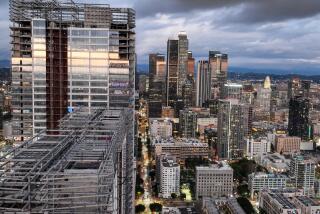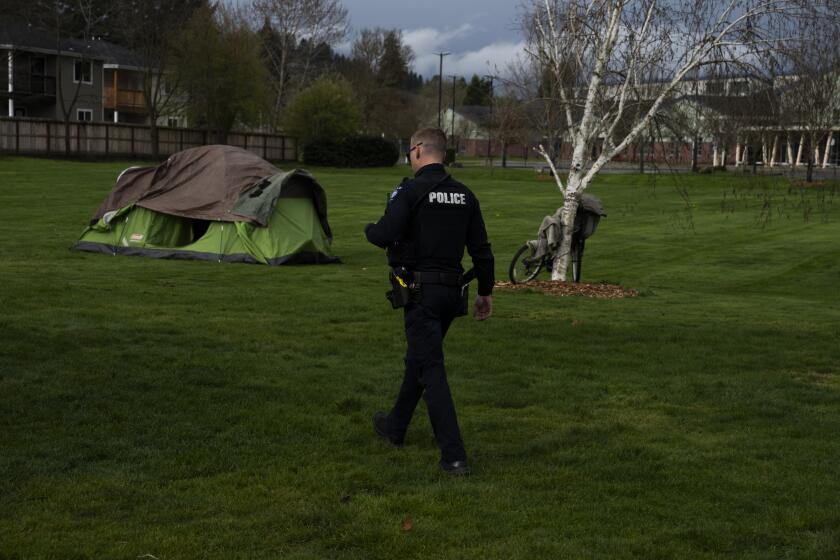Opinion: Los Angeles leaves the flat-roof society
Think of the nation’s most impressive skylines. New York City has Art Deco points atop the Empire State and Chrysler buildings and the spire capping the new One World Trade Center tower. Besides the soaring Willis Tower (formerly known as the Sears tower), Chicago’s skyscrapers are capped with pyramids and diamonds. Even the array of buildings in Dallas – Dallas?! – is more eye-catching than Los Angeles’ bland skyline that is mostly a bunch of tall rectangles with flat tops.
But no more. Los Angeles Mayor Eric Garcetti announced that the city has finally ended its longstanding requirement to build only flat roofs on skyscrapers, which clears the way for new buildings topped by spires, slanted or other types of roofs. The change could remake L.A.’s boxy skyline, unshackle architects and elevate the look of Los Angeles’ cityscape, Emily Alpert Reyes reported.
The old rule, which has been in place since 1974, was supposed to ensure that a helicopter could land on top of tall buildings in case of a fire or emergency. That regulation probably made sense three decades ago, but it became increasingly outdated with the development of automatic sprinkler systems, fire service elevators and better building design that allows faster evacuations. Yet the rule stayed in place as Los Angeles grew taller. While skyscraper architecture got more creative and exciting around the globe, the city was stuck in Dullsville, thanks to the flat-top rule.
Planning and architecture experts pushed the city to modernize its building standards, noting that no other big city had a similar requirement and research had found that a helicopter pad was not necessary for emergency rescue. Still, the Los Angeles Fire Department clung to the flat-top rule – until now.
Newly appointed Fire Chief Ralph Terrazas said there was no new analysis or information that prompted the LAFD to reverse course. Rather, he noted “our Fire Department culture is resistant to change sometimes.”
The bigger question is why did L.A. hold on to its flat-roof policy for three decades when cities around the world realized ages ago that they could build a safe skyscraper without a helipad? Too often Los Angeles is hamstrung by its own rules and codes, which are often outdated, require time-consuming workarounds and stifle innovation.
The Planning Department is attempting to update the city’s 70-year-old zoning code, which was written for postwar suburban development and has become so overlaid with conflicting rules that many developers or business owners have to hire an expert to navigate the approval process. Mayor Eric Garcetti recently tasked the Board of Taxicab Commissioners to reexamine the 96-page taxi rulebook to see whether old regulations are making it unnecessarily hard for cabs to compete with Uber, Lyft and other app-based ridesharing businesses.
Updating L.A.’s regulations is a time-consuming, labor-intensive process, but it’s worth it. A modern city should have modern rules.
For more opinions, follow me @kerrycavan
More to Read
A cure for the common opinion
Get thought-provoking perspectives with our weekly newsletter.
You may occasionally receive promotional content from the Los Angeles Times.







